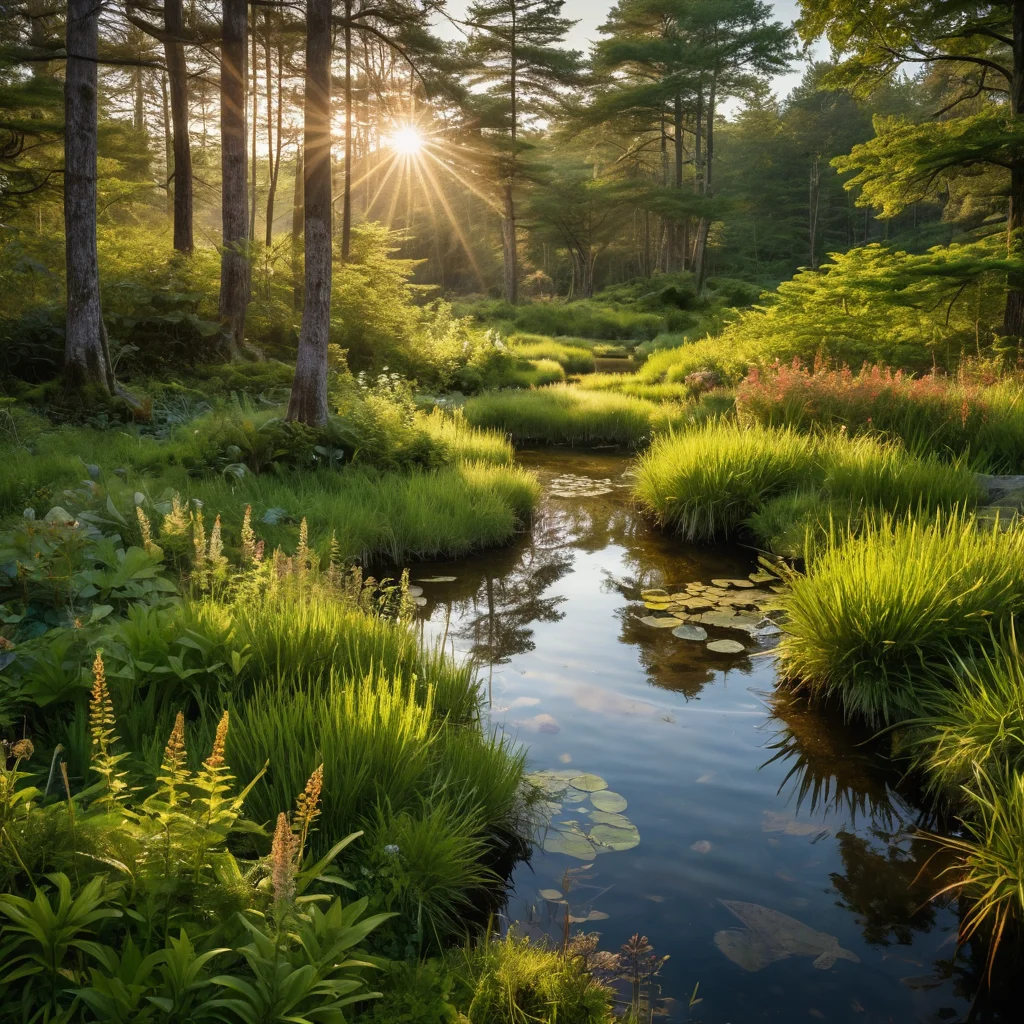Remember the smell of the earth after a summer rain – that fresh, tart aroma, promising life and growth. And the dew, sparkling on the emerald grass in the early morning, and the buzzing of bumblebees, rushing to collect nectar from the fluffy heads of flowers… These sensations are the very essence of nature’s magic, which can also settle on your plot. Often we think that the ideal garden is strict lines, perfect lawns, and dry flowering. But what if I told you that a true oasis of harmony and beauty can be created in the wettest part of your garden? Today we will talk about how to turn a seemingly problematic area into a real wonder – your own ‘bog’ garden.
What is a Bog Garden and Why is it Ideal for Your Plot?
So, what is a ‘bog’ garden? In reality, it is not a dirty and neglected place, but a carefully planned composition of moisture-loving plants that mimics the natural conditions of a coastal zone, a lowland, or even a real bog. It is an amazing world where water and earth intertwine in a dance of life, creating a unique microclimate and attracting a wide variety of inhabitants – from dragonflies to songbirds. Why is such a garden ideal? Firstly, it solves the problem of plots with high groundwater levels or where rainwater naturally accumulates. Instead of fighting the moisture, we tame it and use it for good. Secondly, a ‘bog’ garden is a true paradise for a wide variety of spectacular plants that do not always feel good in dry, sunny flowerbeds. And thirdly, it is an inexhaustible source of inspiration for creating a unique landscape full of life and movement. It is an opportunity to add exoticism, tranquility, and enchanting natural charm to your garden. Believe my experience, such a corner will become a favorite place for relaxation and contemplation.
Types of Bog Gardens: From Mini-Pond to Damp Lowland
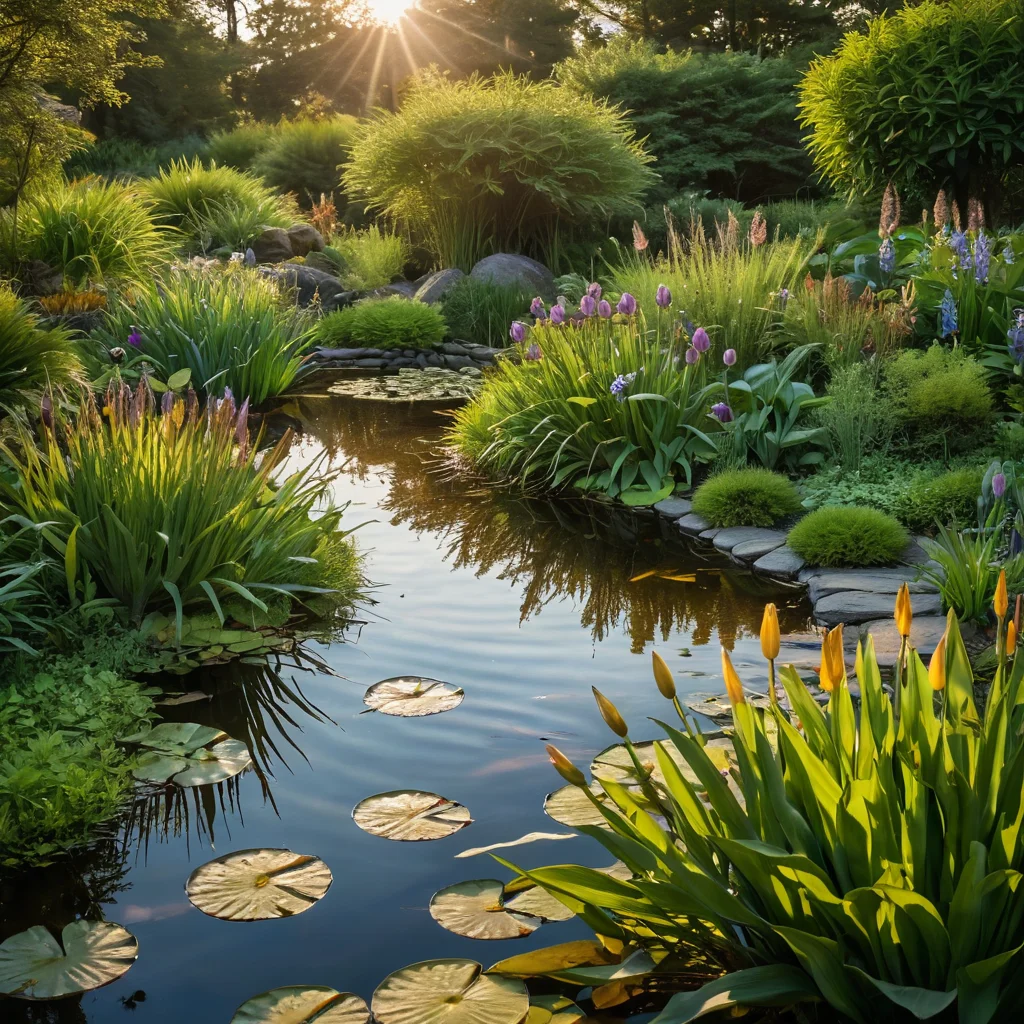
There are several main approaches to creating a ‘bog’ garden, and the choice depends on the features of your plot and your preferences. You don’t necessarily need a large space or a deep lake to enjoy the beauty of damp corners.
- Mini-pond or water niche. This is the most classic option. The basis of such a garden is a small container dug into the ground (e.g., an old bathtub, special film, or a ready-made form), filled with water. Moisture-loving plants are planted around the pond, creating a picturesque frame. The depth can be small, 15-30 cm is enough for most plants.
- Damp lowland or coastal zone. This type of garden is suitable for plots where water naturally collects after rain, or for those who want to create an artificial lowland. Here, creating a reservoir as such is not required; the focus is on plants that love constantly moist soil. You can create a slight slope so that water does not stagnate for too long, but the soil remains as moist as possible.
- Stream or cascade. If possible, you can create a small artificial stream that flows from one part of the garden to another. Many bog plants will feel great along the banks of such a stream, and the murmur of water will add tranquility. Even a small cascade flowing down several steps can create the necessary humidity and liven up the composition.
- Container bog garden. An excellent option for those who cannot dig or for creating mobile compositions. You can use wide, shallow containers or even old basins. The main thing is to ensure good drainage and constantly maintain the moisture of the substrate.
Don’t be afraid to experiment! Your ‘bog’ garden can be a small cozy composition in a corner of the plot or occupy an entire zone, smoothly transitioning from one form to another. The main thing is to understand which type is most suitable for you.
Choosing a Location: Where is the Best Place to Create a Damp Corner in the Garden?
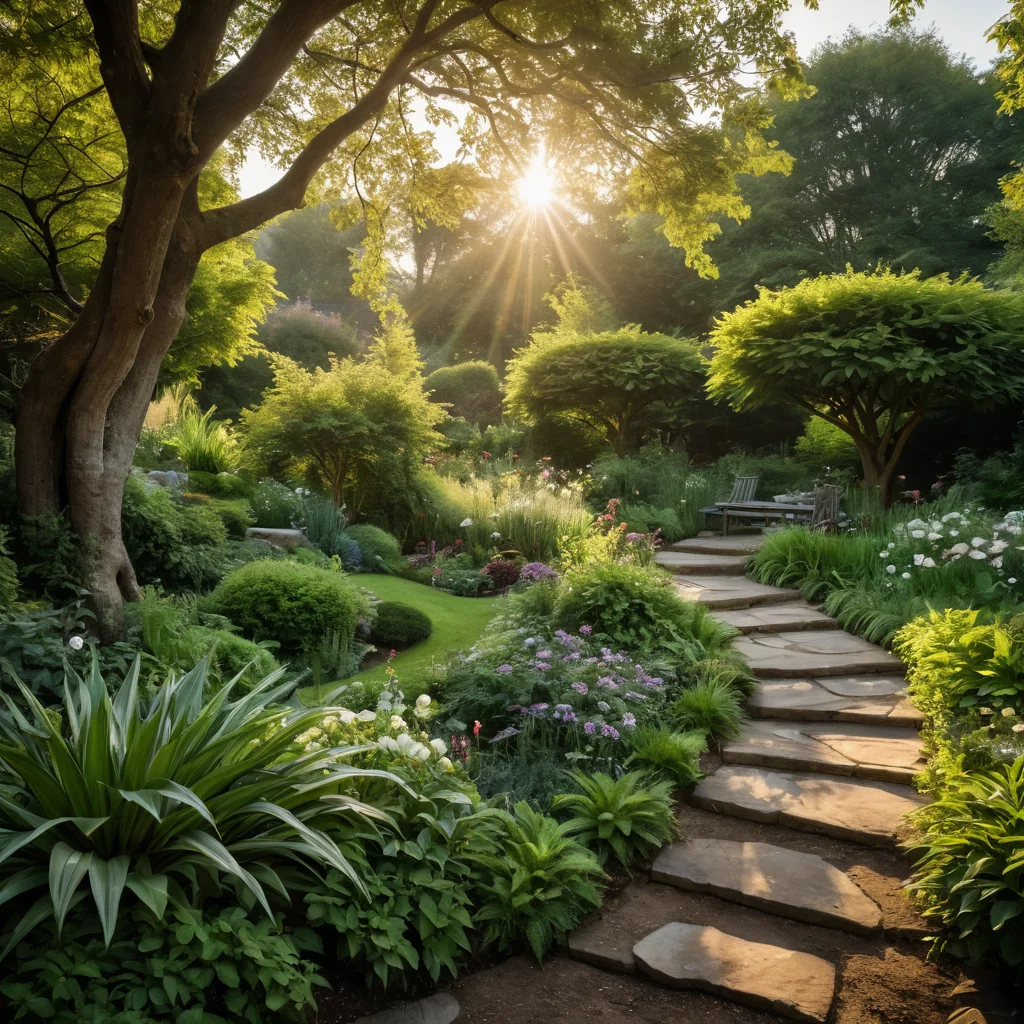
Choosing the right location is half the battle in creating any garden, especially a ‘bog’ garden. Two main factors are important here: humidity and lighting. I always advise starting by observing your plot. Watch where water naturally collects after rain. Are there any low-lying areas on the plot that dry out slowly? These are ideal candidates! But even if there are no such places, don’t despair.
Main recommendations for choosing a location:
- Natural lowlands. If you have an area where puddles form after rain that don’t dry out quickly – this is your ‘jackpot’! Such areas already have the necessary microclimate. Your task will be only to select the right plants and, possibly, make minor adjustments to the terrain.
- Areas with high groundwater levels. If your plot is generally damp, creating a ‘bog’ garden can be an excellent way to not fight this feature, but to use it.
- Partial shade or shade. Most moisture-loving plants prefer partial shade or diffused light. Direct sunlight can quickly dry out the soil, which is undesirable for such a garden. An ideal location could be the space under the crowns of trees, near the north wall of the house or fence.
- Places without strong wind. Strong winds can quickly dry out moist soil and damage delicate plants. Therefore, choose sheltered corners of the garden.
- Proximity to water sources (optional, but convenient). If you plan to regularly add water or use a mini-pond, proximity to a tap or water body will simplify maintenance.
- Visibility and accessibility. Think about where this garden will look best and from where you can admire it. Make sure there is convenient access for maintenance.
Remember that a ‘bog’ garden is not just plants, but a whole ecosystem. Therefore, when choosing a location, try to imitate natural conditions as much as possible. Believe me, nature itself will suggest the best solution!
Preparing the Base: How to Create the Right Microclimate for a Bog Garden
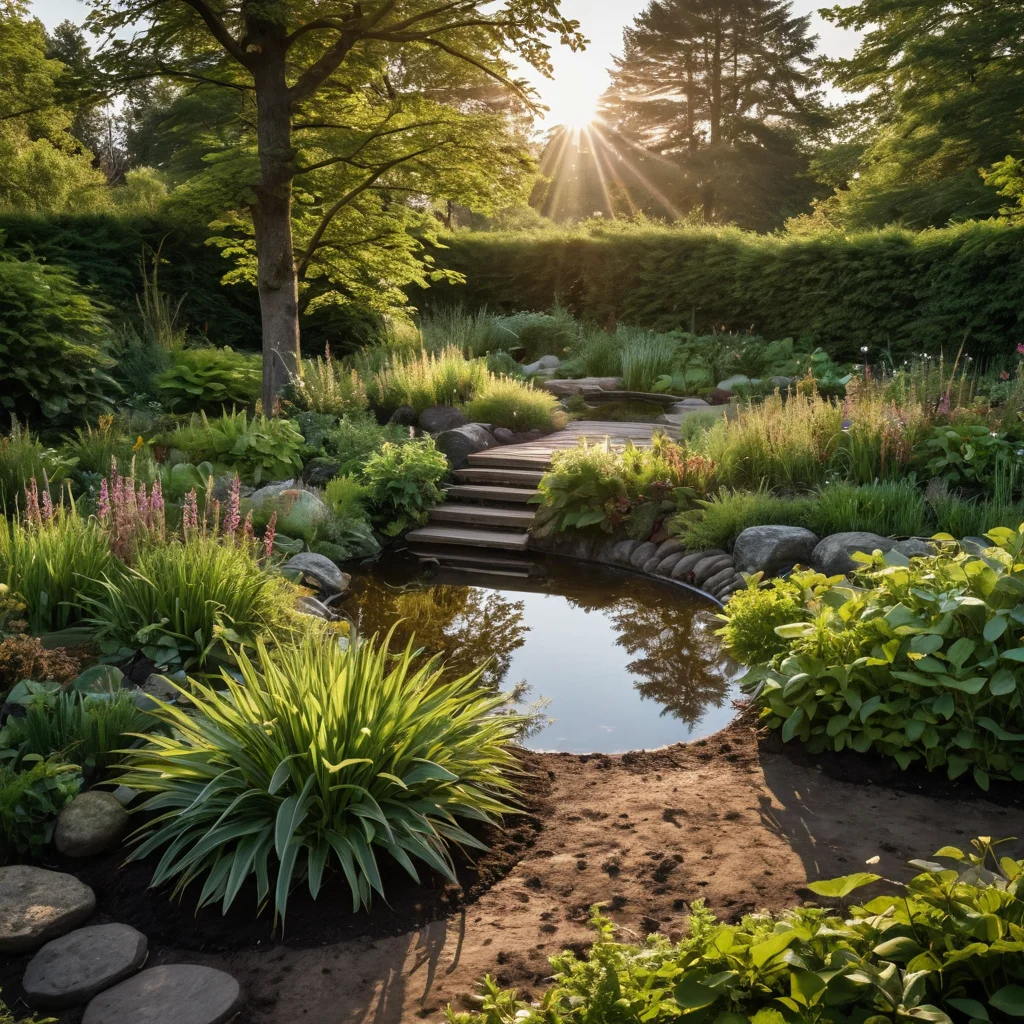
Creating the right base is a key stage that will determine the success of your ‘bog’ garden. Our goal is to ensure constant, but not stagnant, soil moisture and create favorable conditions for the growth of selected plants. If you decide to create a mini-pond, the first thing to do is to dig a pit and install a container or lay a waterproofing membrane. To create a natural lowland or coastal zone, we will need to work with the soil a bit.
Steps for preparing the base:
- Drainage (paradoxical, but important!). Despite the fact that we are creating a humid garden, stagnant water can lead to root rot. Therefore, especially if you have heavy clay soil, it is worth laying a layer of drainage material at the bottom of the lowland or around the pond: coarse gravel, broken brick, or expanded clay. This will ensure the outflow of excess water into the lower layers, but will preserve the overall humidity.
- Creating a waterproof layer. If the natural drainage of your plot is too good and water will drain away quickly, you will have to create a waterproof layer. This can be done by laying dense clay (if available on the plot) or a special waterproofing membrane (PVC, EPDM) at the bottom, which can be secured around the edges. If you use a membrane, be sure to make it with a margin so that the edges can be masked with soil or stones.
- Preparing the substrate. The soil for a ‘bog’ garden should be nutritious and retain moisture well. The ideal option is a mixture of:
- Garden soil (30%)
- Peat (30%) – it retains moisture excellently and acidifies the soil, which many bog plants love.
- Compost or humus (20%) – for plant nutrition.
- Coarse sand or perlite (20%) – to improve aeration and prevent compaction.
- You can also add a little clay if the soil is too loose.
- Shaping the terrain. If you are creating a lowland, try to make it not flat, but with small slopes and terraces. This will create different levels of humidity and allow you to plant plants with different needs. Create smooth transitions from wetter areas to slightly drier ones.
- Laying the membrane (if there is a pond). If you are using a membrane for the pond, lay it on a hot sunny day – this will make it more elastic. Smooth out all wrinkles, press the edges with soil.
Remember that a properly prepared base is the key to your ‘bog’ garden delighting you for many years to come. Don’t rush, pay due attention to this stage.
Plants for a Bog Garden: TOP 15 Moisture-Loving Beauties
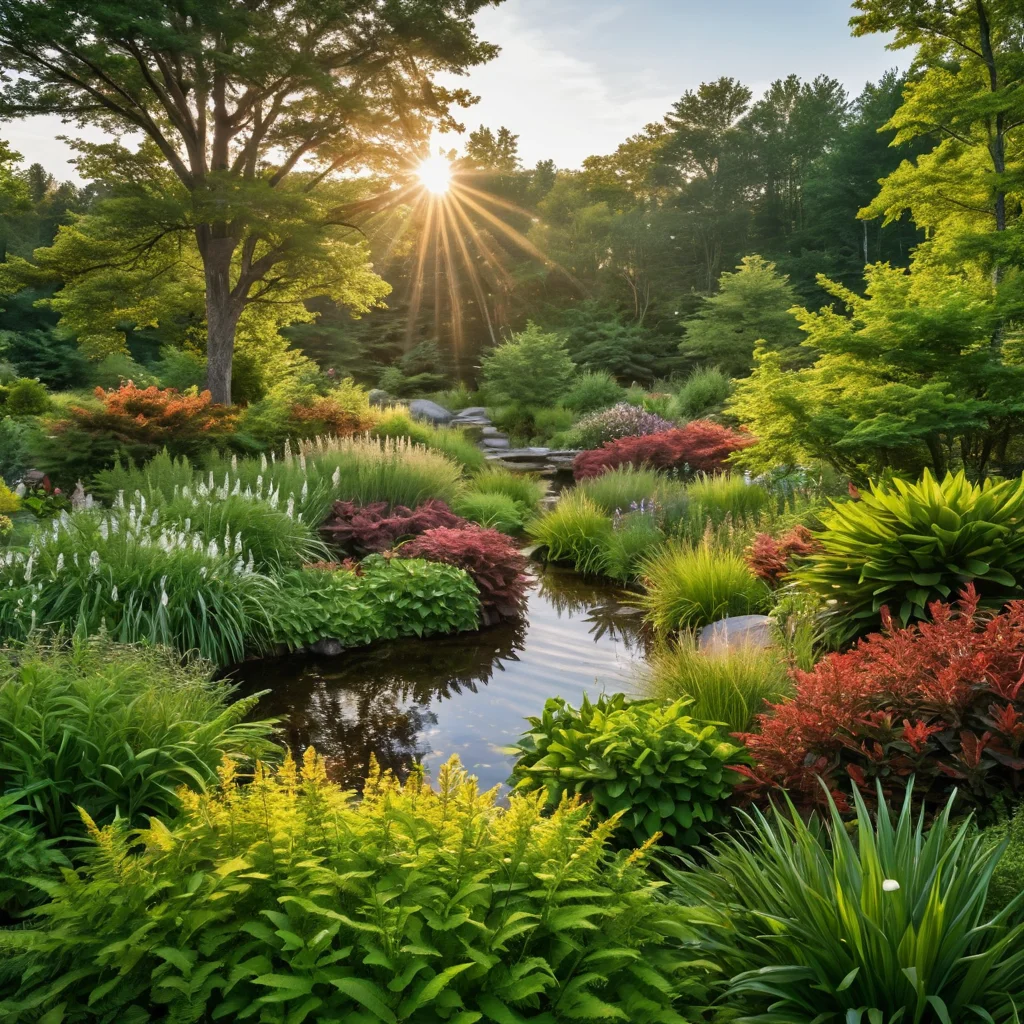
Here we come to the most interesting part – choosing plants! This is the heart of your ‘bog’ garden. Fortunately, the world of moisture-loving plants is incredibly diverse and beautiful. From lush hostas to elegant irises – everyone will find something to their liking. I have selected 15 proven beauties for you that feel great in conditions of high humidity and will become a decoration for your garden.
- Hosta (Hosta). The queen of shady and damp places. There is a huge variety of cultivars with different leaf shapes, sizes, and colors – from dark green to bluish and variegated.
- Yellow flag iris (Iris pseudacorus). A classic. Bright yellow flowers, striking sword-shaped leaves. Spreads beautifully near water.
- Astilbe (Astilbe). Delicate, airy panicle inflorescences in a wide variety of shades – from white and pink to red and lilac. Prefers partial shade.
- Bergenia (Bergenia). An evergreen plant with large, leathery leaves that turn bronze in autumn. Blooms with pink bells in early spring.
- Purple loosestrife (Lythrum salicaria). A very spectacular plant with tall spikes of purple-pink flowers. Attracts butterflies and bees.
- Marsh marigold (Caltha palustris). An early-blooming plant with bright, glossy yellow flowers resembling large buttercups.
- Daylily (Hemerocallis). Many daylily cultivars grow well in damp conditions. Their unpretentiousness and variety of flower shapes are amazing.
- Sedge (Carex). Ornamental grasses that add texture and movement to the garden. There are cultivars with green, variegated, bluish leaves.
- Rodgersia (Rodgersia). A large plant with spectacular palmate-lobed or pinnate leaves. Blooms with fluffy panicles.
- Ninebark (Physocarpus opulifolius). Especially cultivars with purple leaves (e.g., ‘Diablo’) look very decorative near water.
- Willow-leaf spirea (Spiraea salicifolia). A low-growing shrub with white or pink inflorescences that feels good near water.
- Knotweed (Polygonum). Some species of knotweed, for example, Polygonum weyrichii, form picturesque thickets and grow well in damp conditions.
- Fireweed (Chamaenerion). Often found in nature in damp meadows and forest edges. Has beautiful pink inflorescences.
- Marsh cinquefoil (Comarum palustre). A medicinal plant with dark red flowers and serrated leaves.
- Forget-me-not (Myosotis). The delicate blue flowering of forget-me-nots will perfectly complement the composition near the water.
When choosing plants, pay attention to their height, leaf shape, flowering time, and lighting requirements. Try to combine plants with different textures and colors so that the composition looks harmonious all year round.
Creating a Composition: How to Properly Arrange Plants and Decorative Elements
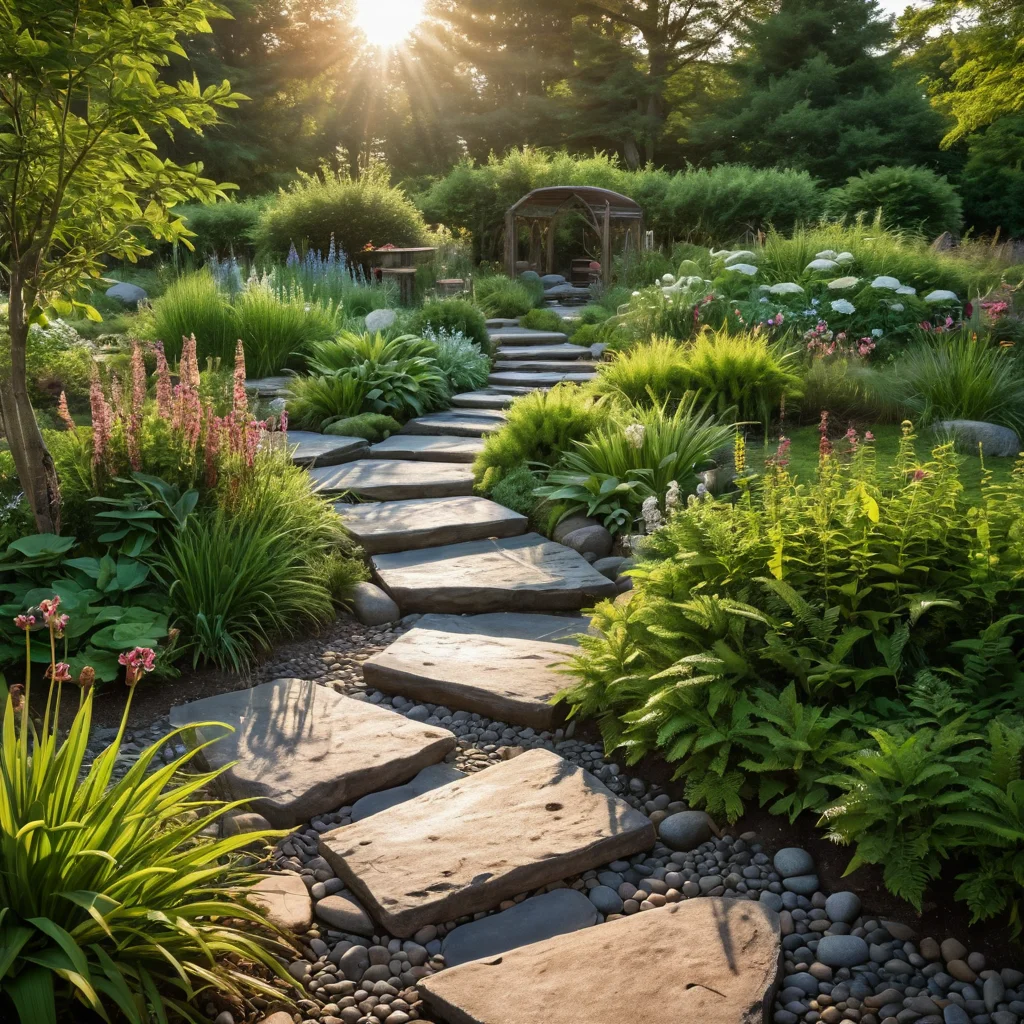
When the base is ready and the plants are chosen, the most creative stage begins – creating the composition. There are no strict rules here, but there are principles that will help make your ‘bog’ garden truly harmonious and picturesque. I always advise starting with visualization: imagine how it will look in nature. Nature is our best teacher!
Basic principles of composition building:
- Imitation of natural zones. Plants should be arranged as they would grow in their natural environment. Taller and larger plants – in the background or in the center (if it’s an island), shorter ones – along the edges. Plants that love to be in water – at the very edge of the pond or in shallow water.
- Use of different levels. Create multi-level plantings. Use not only plants but also decorative elements to add volume and interest.
- Group plantings. Don’t plant plants one by one. Groups of 3-5 plants of the same species look much more spectacular and natural.
- Contrast and harmony. Combine plants with different leaf shapes (cut, round, linear) and different colors. The contrast of textures and colors makes the composition more expressive.
- Vertical accents. Use tall plants (loosestrife, iris) or ornamental grasses to give the garden vertical dynamics.
- Decorative elements.
- Stones and boulders. They give the composition naturalness and can serve as support for plants. Use stones of different sizes, but try to make them look as if they have always been there.
- Snags and tree slices. They give the garden coziness and a sense of antiquity. They can also serve as support for climbing plants or a place to sit.
- Wooden bridges and paths. If space allows, small wooden bridges or paths made of tree slices will add elegance and functionality.
- Figurines. If you like, you can add small, nature-themed figurines (frogs, dragonflies, gnomes), but don’t overdo it, so as not to disturb the harmony.
- Blooming throughout the season. Try to select plants so that flowering alternates, and your garden delights you with colors from spring to autumn.
Don’t be afraid to experiment with placement! Sometimes the best results are achieved through trial and error. Move the plants around, see how they look at different times of the day and in different lighting. Your ‘bog’ garden is your work of art!
Bog Garden Care: Watering, Fertilizing, and Weed Control
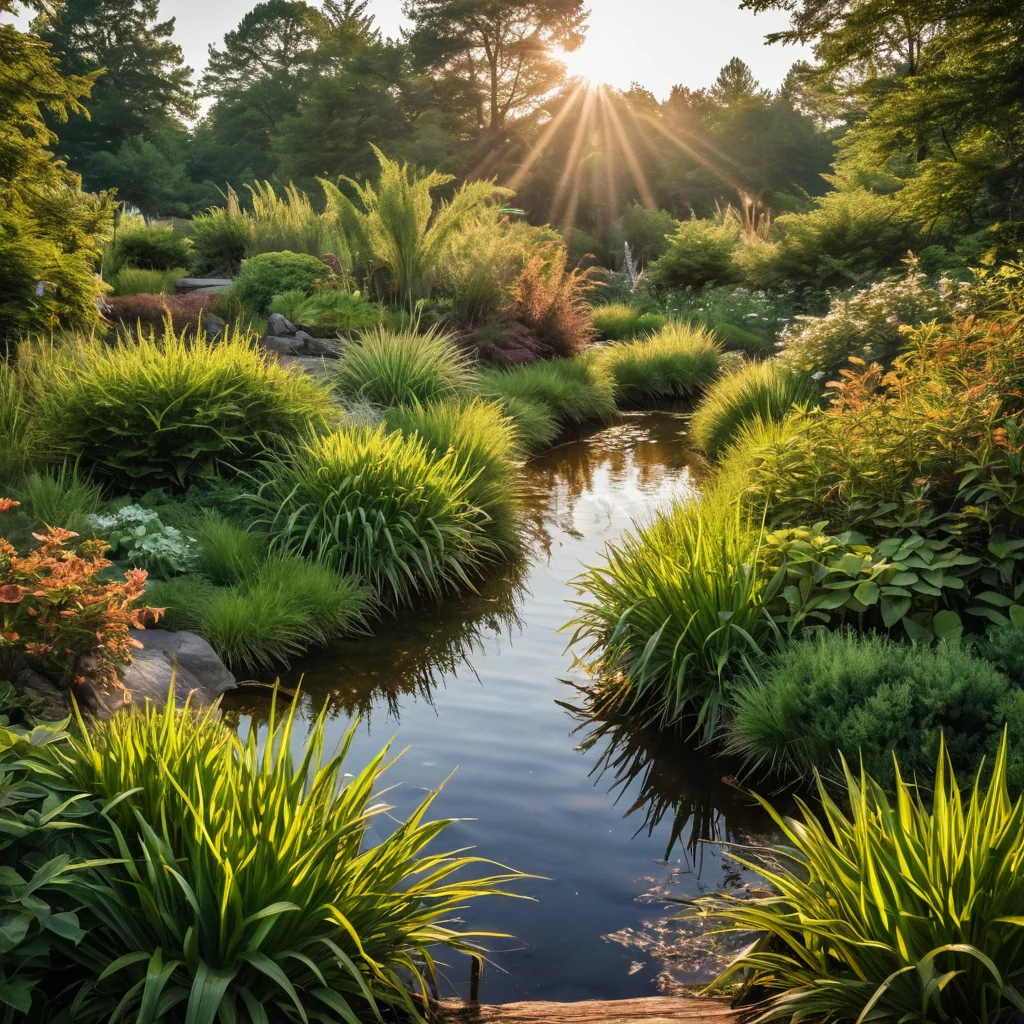
Many mistakenly believe that a ‘bog’ garden is a garden that requires no care. This is not entirely true. Although it mimics natural conditions, it is still under your control. Proper care will ensure its health, beauty, and longevity.
Watering:
- The main principle is maintaining humidity. Unlike a regular garden, watering here is more about maintaining the necessary level of humidity. In dry periods, additional watering may be required, especially for plants in drier areas of the composition.
- Using rainwater. If possible, collect rainwater. It is ideal for plants as it does not contain chlorine or other impurities.
- Monitoring water level in the pond. If you have a mini-pond, monitor the water level, especially in summer when evaporation is active.
Fertilizing:
- Moderation is key to success. Plants in humid conditions, especially on nutritious substrate, grow quite actively. Excessive fertilization can lead to vigorous growth of greenery at the expense of flowering or even plant death.
- Spring feeding. In spring, when plants are just waking up, you can apply a complex mineral fertilizer with a low nitrogen content.
- Organic fertilizers. Compost or humus are well-suited, which can be added as mulch.
- Do not fertilize in the second half of summer. This can provoke the growth of new shoots that will not have time to mature before winter.
Weed control:
- Regular weeding. This is the main method of control. Since the soil is constantly moist, weeds can grow faster. Regularly inspect plantings and remove unwanted plants before they gain strength.
- Mulching. A layer of mulch (bark, wood chips, gravel) will help suppress weed growth and retain soil moisture.
- Algae control. Undesirable algae can appear in mini-ponds. Regularly remove them mechanically. Special biological water treatment agents can be used.
Other important points:
- Pruning. Remove faded inflorescences and damaged leaves to maintain the decorative appearance and health of the plants. In autumn, light pruning of perennials can be done.
- Wintering. Most moisture-loving plants are quite frost-resistant. However, if you are using containers, it is better to insulate them for the winter or move them to a more protected location.
Caring for your ‘bog’ garden is not hard work, but rather a pleasant communion with nature. By observing it, you will better understand its needs.
Common Mistakes When Creating a Bog Garden and How to Avoid Them

Even when following instructions, mistakes can sometimes be made. But don’t be discouraged! The main thing is to be able to notice and correct them in time. I have compiled the most common blunders that novice gardeners make when creating a ‘bog’ garden, and I will tell you how to avoid them.
- Mistake #1: Incorrect location choice.
- Problem: Too sunny a spot is chosen, the soil dries out quickly, or vice versa, the spot is too shady and the plants don’t develop.
- Solution: Carefully observe the plot throughout the day and in different weather conditions before choosing a location. Most bog plants prefer partial shade.
- Mistake #2: Stagnant water without drainage.
- Problem: The soil is constantly wet, water does not drain, leading to root rot.
- Solution: Even in a damp garden, proper drainage is needed. Lay a layer of gravel or expanded clay at the bottom of the lowland or around the pond.
- Mistake #3: Planting plants too deep.
- Problem: Plant roots are constantly submerged in water, leading to rot.
- Solution: Consider the needs of the plants. Most of them prefer moist soil, but not constant immersion in water. For planting at the water’s edge, use pots or create terraces.
- Mistake #4: Excessive use of fertilizers.
- Problem: Vigorous growth of greenery, pale leaves, lack of flowering.
- Solution: Apply fertilizers moderately, preferably in spring, and use formulations with low nitrogen content for this purpose.
- Mistake #5: Incorrect plant neighbors.
- Problem: Fast-growing and aggressive plants overshadow more delicate species.
- Solution: When selecting plants, consider their growth rates and development characteristics. Plant aggressive species in special baskets to limit their spread.
- Mistake #6: Ignoring decorative elements.
- Problem: The garden looks flat and boring, lacking a highlight.
- Solution: Add natural stones, snags, tree slices. They will give the composition volume, structure, and a finished look.
- Mistake #7: Lack of a plan.
- Problem: Chaotic planting, disharmonious composition.
- Solution: Before you start, sketch a plan or outline of your future garden. Think about the placement of plants, decorative elements, and zones.
Remember that every garden is a living organism that develops and changes. Don’t be afraid to experiment, observe your plants, and your ‘bog’ garden will surely become a source of pride and tranquility!
